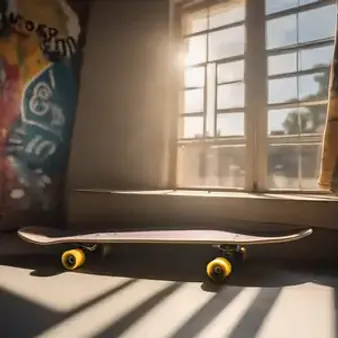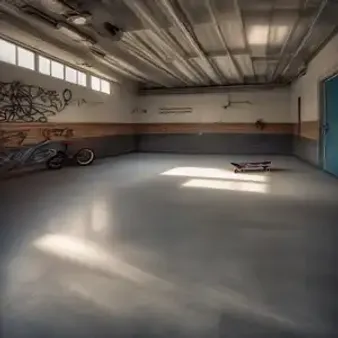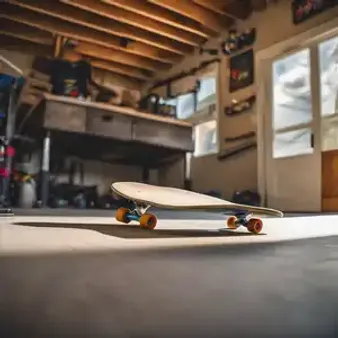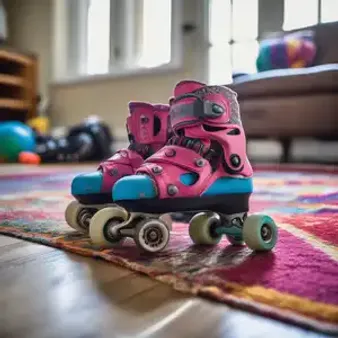Table of Contents
Want to learn some cool skateboard tricks? Skating at home is a great way to practice and have fun without even leaving your house! At kizworld, we're all about helping you find awesome activities, and skating at home is a perfect choice. Get ready to learn how to set up your own skate space, master some tricks, and stay safe while doing it.
Topic | Key Points |
|---|---|
Benefits | Convenience, personalized practice, safety, weatherproof fun |
Setup | Smooth, open space, safety gear, obstacles (optional) |
Tricks | Start with basics (balance, pushing, turning), gradually learn ollies, kickflips, grinds |
Safety | Wear safety gear, clear the area, start slow, know your limits, have adult supervision (if needed) |
Benefits of Skating at Home
Imagine this: it's a sunny afternoon, you're itching to practice some new skateboard tricks, but the local skatepark is packed. Ugh, the struggle is real, right? Well, what if I told you there's a way to shred whenever you want, without leaving your house? That's the beauty of skating at home! It's like having your own personal skatepark, tailored just for you.
First off, let's talk convenience. No more packing up your gear, trekking to the park, and waiting your turn. With a home setup, you can skate whenever the mood strikes. Rainy day? No problem! Scorching hot sun? Stay cool and skate inside! Plus, you can learn at your own pace. Remember when you were trying to master that ollie and felt a bit self-conscious with everyone watching? At home, it's just you and your board, no pressure, just pure skateboarding fun. You can focus on nailing those tricks without feeling like you're on display.
Benefit | Why It's Awesome |
|---|---|
Convenience | Skate whenever you want, no need to travel! |
Personalized Practice | Learn at your own pace, focus on the tricks you want. |
But it's not just about convenience. Skating at home gives you the freedom to create a space that's uniquely yours. Want to practice grinds? Set up a rail! Dreaming of mastering manuals? Find a long, smooth stretch of ground. You can even use chalk to draw lines and create your own mini courses. It's like having a blank canvas for your skateboarding imagination, and the possibilities are endless!.
And let's not forget about safety. When you're skating at home, you're in control of your environment. You can clear the area of obstacles, make sure the ground is smooth, and even set up some padding for extra protection. Plus, if you're a beginner, having a safe space to practice without the pressure of other skaters around can be a huge confidence booster. Think of it like this: it's like having a skateboarding training ground where you can hone your skills and build up your confidence before hitting the skatepark.
- Safety Gear: Always wear your helmet, knee pads, and elbow pads, even at home. Safety first!
- Clear the Area: Make sure your skating space is free of toys, furniture, or anything you could trip over.
- Start Slow: Don't try anything too crazy right away. Get comfortable with the basics before moving on to more challenging tricks.
Benefits of Skating at Home
Setting Up Your Home Skating Space
Okay, so you're stoked about skating at home, but where do you start? The first step is finding the perfect spot. Look around your house—it could be the garage, the driveway, a patio, or even a long hallway. You want a space that's flat, smooth, and free of obstacles. Imagine it like this: you're setting the stage for your own personal skate show, so you want it to be awesome!
Think about the tricks you want to learn. If you're dreaming of mastering those epic grinds, you might want to check out this article on how to grind! Maybe you're all about manuals, in which case, you'll need a good stretch of smooth ground. If you're just starting, a clear, open space is perfect for practicing your balance and getting comfortable on your board. Remember, you can always get creative and use chalk to draw lines or set up some mini obstacles. It's your skatepark, so make it your own! And speaking of skateparks, if you're curious about different types, check out this article about vert skateboarding.
Space | Best For |
|---|---|
Garage | Grinds, ramps, practicing in any weather |
Driveway | Manuals, longer runs, practicing ollies |
Patio | Flatground tricks, practicing balance |
Now, let's talk safety! Before you even think about stepping on your board, gear up! Grab your helmet, knee pads, and elbow pads—it's like putting on your skateboarding armor. Trust me, even if you're just practicing at home, accidents can happen. It's always better to be safe than sorry. Once you're all geared up, it's time to clear the area. Think of it like prepping your skate stage—you don't want any surprise obstacles ruining your performance. Move any toys, furniture, or anything you could trip over out of the way.
Now you're ready to shred! Start slow and get comfortable with the basics. Don't try anything too crazy right away. It's like learning a new dance move—you gotta start with the basic steps before you can bust out the fancy footwork. As you get more confident, you can gradually try new tricks and push your limits. Remember, it's all about having fun and enjoying the process! And if you're looking for some inspiration on how to train like a pro, check out this article about training like a skateboarder!
- Smooth Surface
- Adequate Space
- Minimal Obstacles
Setting Up Your Home Skating Space
Mastering Skate at Home Tricks
Alright, now that you've got your epic home skate space set up, it's time to talk tricks! Remember when you first started skateboarding? It's all about those baby steps, just like learning to ride a bike. Start with the basics: getting comfortable balancing on your board, pushing off, and turning. Think of it like learning your ABCs before you can write a whole story. Once you've got those down, you can start exploring some cool beginner tricks.
One of the most iconic skateboarding tricks is the ollie. It's basically jumping with your board—sounds simple, right? Well, it takes practice, but once you nail it, it opens up a whole world of possibilities! If you're looking for a detailed guide on how to master the ollie, check out this awesome article on how to do an ollie. Trust me, it's like unlocking a secret skateboarding superpower! Another fun trick to try at home is the manual. It's all about balancing on your back wheels, kind of like a wheelie on your bike. Want to learn how to do a manual? We've got you covered! Check out this article on how to do a manual for some helpful tips and tricks.
Trick | Level | Description |
|---|---|---|
Ollie | Beginner | Jumping with your board |
Manual | Beginner | Balancing on your back wheels |
Mastering Skate at Home Tricks
Staying Safe While You Skate at Home
Safety is super important when you're skating at home! It's like having a secret code to make sure you have fun without getting hurt. First things first, always wear your safety gear. I'm talking helmet, knee pads, and elbow pads. Think of it like putting on your superhero suit before you go on an adventure! You don't want to be a skateboarding superhero without your protective gear, right? Before you start skating, make sure your space is clear. It's like making sure the coast is clear before you launch into an awesome trick! No toys, furniture, or anything you could trip over. You want your skate space to be like a smooth, obstacle-free skatepark.
- Clear the Area: Make sure your skating space is free of toys, furniture, or anything you could trip over.
- Start Slow: Don't try anything too crazy right away. Get comfortable with the basics before moving on to more challenging tricks.
Staying Safe While You Skate at Home
Final Thought
Skating at home provides a unique opportunity to blend fun, exercise, and creativity. Whether you're a beginner learning the basics or a seasoned skater practicing more advanced tricks, remember to prioritize safety and enjoy the process of mastering your skills. So, grab your board, find a space, and let your at-home skate journey begin!